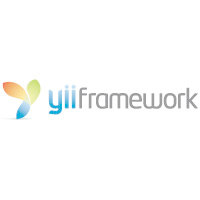 Backend Development
Backend Development
 XML/RSS Tutorial
XML/RSS Tutorial
 Let's talk about the current status, prospects and opportunities of Record examples
Let's talk about the current status, prospects and opportunities of Record examples
Let's talk about the current status, prospects and opportunities of Record examples
We have seen how to use Active Record (AR) to get data from a single data table. In this section, we explain how to use AR to connect multiple related data tables and retrieve the joined data set. To use relational AR, we recommend defining primary key-foreign key constraints in the tables that need to be related. These constraints can help ensure the consistency and integrity of related data. This example introduces how to use Active Record for multiple related tables by modifying the database-Query Builder example of Yii Framework Development Tutorial (25). Before we use AR to perform related queries, we need to let AR know how one AR class is related to another. The relationship between two AR classes is directly related through the relationship between the data tables represented by the AR classes. From a database perspective, there are three relationships between tables A and B: one-to-many (such as tbl_user and tbl_post), one-to-one (such as t
1. PHP Development Framework Yii Framework Tutorial (27) Database-Associated Active Record Example

Introduction: We have learned how to use Active Record (AR) to obtain data from a single data table. In this section, we explain how to use AR to connect multiple related data tables and retrieve the associated data. Set.
##2. PHP Development Framework Yii Framework Tutorial (26) Database-Active Record Example

Introduction: Use Java or .Net to write database applications. Many people have used Hibernate (or NHibernate), which can greatly simplify database programming and read and write databases in the form of objects. (ORM), Active Record (AR) provided by Yii is also a popular object-relational mapping (ORM) technology
[Related Q&A recommendations]:
The above is the detailed content of Let's talk about the current status, prospects and opportunities of Record examples. For more information, please follow other related articles on the PHP Chinese website!

Hot AI Tools

Undresser.AI Undress
AI-powered app for creating realistic nude photos

AI Clothes Remover
Online AI tool for removing clothes from photos.

Undress AI Tool
Undress images for free

Clothoff.io
AI clothes remover

Video Face Swap
Swap faces in any video effortlessly with our completely free AI face swap tool!

Hot Article

Hot Tools

Notepad++7.3.1
Easy-to-use and free code editor

SublimeText3 Chinese version
Chinese version, very easy to use

Zend Studio 13.0.1
Powerful PHP integrated development environment

Dreamweaver CS6
Visual web development tools

SublimeText3 Mac version
God-level code editing software (SublimeText3)

Hot Topics
 1677
1677
 14
14
 1431
1431
 52
52
 1334
1334
 25
25
 1279
1279
 29
29
 1257
1257
 24
24
 XML's Advantages in RSS: A Technical Deep Dive
Apr 23, 2025 am 12:02 AM
XML's Advantages in RSS: A Technical Deep Dive
Apr 23, 2025 am 12:02 AM
XML has the advantages of structured data, scalability, cross-platform compatibility and parsing verification in RSS. 1) Structured data ensures consistency and reliability of content; 2) Scalability allows the addition of custom tags to suit content needs; 3) Cross-platform compatibility makes it work seamlessly on different devices; 4) Analytical and verification tools ensure the quality and integrity of the feed.
 Decoding RSS: The XML Structure of Content Feeds
Apr 17, 2025 am 12:09 AM
Decoding RSS: The XML Structure of Content Feeds
Apr 17, 2025 am 12:09 AM
The XML structure of RSS includes: 1. XML declaration and RSS version, 2. Channel (Channel), 3. Item. These parts form the basis of RSS files, allowing users to obtain and process content information by parsing XML data.
 Beyond the Basics: Advanced RSS Document Features
Apr 21, 2025 am 12:03 AM
Beyond the Basics: Advanced RSS Document Features
Apr 21, 2025 am 12:03 AM
Advanced features of RSS include content namespaces, extension modules, and conditional subscriptions. 1) Content namespace extends RSS functionality, 2) Extended modules such as DublinCore or iTunes to add metadata, 3) Conditional subscription filters entries based on specific conditions. These functions are implemented by adding XML elements and attributes to improve information acquisition efficiency.
 RSS in XML: Unveiling the Core of Content Syndication
Apr 22, 2025 am 12:08 AM
RSS in XML: Unveiling the Core of Content Syndication
Apr 22, 2025 am 12:08 AM
The implementation of RSS in XML is to organize content through a structured XML format. 1) RSS uses XML as the data exchange format, including elements such as channel information and project list. 2) When generating RSS files, content must be organized according to specifications and published to the server for subscription. 3) RSS files can be subscribed through a reader or plug-in to automatically update the content.
 RSS & XML: Understanding the Dynamic Duo of Web Content
Apr 19, 2025 am 12:03 AM
RSS & XML: Understanding the Dynamic Duo of Web Content
Apr 19, 2025 am 12:03 AM
RSS and XML are tools for web content management. RSS is used to publish and subscribe to content, and XML is used to store and transfer data. They work with content publishing, subscriptions, and update push. Examples of usage include RSS publishing blog posts and XML storing book information.
 RSS in XML: Decoding Tags, Attributes, and Structure
Apr 24, 2025 am 12:09 AM
RSS in XML: Decoding Tags, Attributes, and Structure
Apr 24, 2025 am 12:09 AM
RSS is an XML-based format used to publish and subscribe to content. The XML structure of an RSS file includes a root element, an element, and multiple elements, each representing a content entry. Read and parse RSS files through XML parser, and users can subscribe and get the latest content.
 RSS Document Formats: Exploring RSS 2.0 and Beyond
Apr 26, 2025 am 12:22 AM
RSS Document Formats: Exploring RSS 2.0 and Beyond
Apr 26, 2025 am 12:22 AM
RSS2.0 is an open standard that allows content publishers to distribute content in a structured way. It contains rich metadata such as titles, links, descriptions, release dates, etc., allowing subscribers to quickly browse and access content. The advantages of RSS2.0 are its simplicity and scalability. For example, it allows custom elements, which means developers can add additional information based on their needs, such as authors, categories, etc.
 Scaling XML/RSS Processing: Performance Optimization Techniques
Apr 27, 2025 am 12:28 AM
Scaling XML/RSS Processing: Performance Optimization Techniques
Apr 27, 2025 am 12:28 AM
When processing XML and RSS data, you can optimize performance through the following steps: 1) Use efficient parsers such as lxml to improve parsing speed; 2) Use SAX parsers to reduce memory usage; 3) Use XPath expressions to improve data extraction efficiency; 4) implement multi-process parallel processing to improve processing speed.



